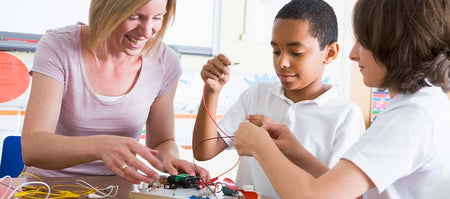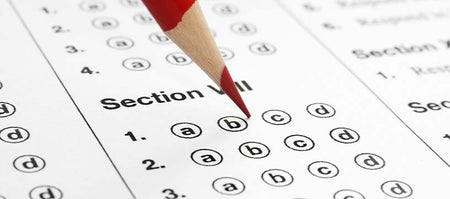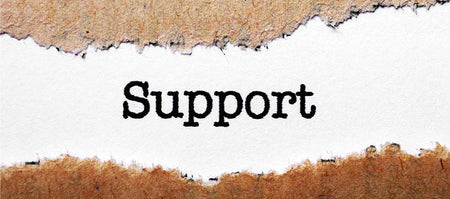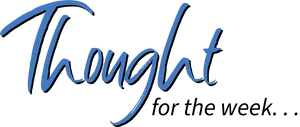Latest Posts

Climate and Culture, In Your Corner
Five Crucial Considerations to Protect Social and Emotional Learning
The growth in popularity of social and emotional learning (SEL) is bringing with it increased attention to and scrutiny of what exactly SEL means and questions about whether it is something more than just another educational fad or ideological movement. These reactions are important in that the history of education is replete with examples of good ideas and promising practices that were rejected due to lack of clarity about definition and purpose, over-promising of results, less than rigorous implementation, and fears of ideological motivation. Push back regarding the common core standards, outcome-based education, and the self-esteem movement are just a few examples of how misperceptions, missteps, and mistrust derailed promising ideas and initiatives.
The good news is that there is a significant reservoir of support for the purpose and practices featured in most SEL programs. The pandemic has brought into focus the importance of skills such as coping, decision making, goal setting, and relationship building. Most adults see the need for young people do develop civic, moral, and character aspects of themselves.
However, failure to address areas of potential confusion and concern could seriously undermine and even imperil efforts related to SEL. In fact, without attention and effort now, SEL could become the next flash point in partisan political conflict. Let’s explore five aspects of SEL that deserve attention now if we hope to avoid having it become the next battle in the culture wars.
First, consider whether social and emotional learning is what you should call this effort. A recent survey by YouGov, commissioned by the Thomas B. Fordham Institute found that parents strongly support most of the components of social and emotional learning, but are resistant to the name. In fact, more that 75% of parents in both major political parties supported addressing the social and emotional needs of students. However, they rated the name at the bottom of a list of potential terms to describe the concept. The name most popular among parents was life skills. It seems the term social and emotional learning sounds too much like jargon and is open to a wide variety of interpretations and misperceptions.
Second, consider how social and emotional skill development can be a partnering effort with families. Many parents consider the skills associated with social and emotional development to also be part of their role and responsibilities as parents and families. There is little benefit in attempting to compete with this perception and significant opportunity in partnering to develop these skills in children and young people. In addition, when families see social and emotional learning as a shared effort, they are less likely to be suspicious or to join efforts to undermine the work.
Third, be clear and consistent in describing what SEL is and is not. Already, there are varied definitions of the skills, behaviors, and dispositions addressed under the umbrella of SEL. Lack of clarity is an invitation to skeptics and detractors to attack the movement and derail efforts to develop SEL competencies in students. The Collaborative for Academic, Social, and Emotional Learning (CASEL) framework includes five dimensions: self-awareness, self-management, social awareness, relationships skills, and responsible decision-making. While these elements define broad areas for attention, they remain open to considerable interpretation and potential misinterpretation.
Fourth, be careful not to oversell the academic impact of SEL. While SEL can provide support for academic learning efforts and processes, it is largely a complement to academic learning. Promising increased academic scores because of SEL efforts would likely be difficult to document. Certainly, SEL efforts can prepare students to become more engaged, confident learners and more successful adults, but promising specific academic outcomes tied to SEL is risky.
Fifth, communicate the connection between SEL and character development and civic education. There is broad consensus across political boundaries that we need more civic engagement and character development. Characteristics such as integrity, honesty, and empathy enjoy near universal support. Adults across the political spectrum also tend to agree that civil behavior, civic engagement, and social consciousness are important aspects of youth development.
Of course, there probably is not a path that will be free of questions and doubt, but by knitting together a strong case for addressing the social and emotional needs and skills of today’s young people we can preempt much of the strongest resistance. Meanwhile, our efforts can make a dramatic difference in the success and happiness of the generation now in our schools.

In Your Corner, Student Learning
Striking a Crucial Balance: Students as Consumers, Appliers, and Creators
Convincing students to give their best effort, persist in the face of learning challenges, and learn from mistakes and setbacks is a constant struggle for educators. Yet, we know that these three factors are crucial to students becoming skilled, successful learners. High levels of learning require commitment, focus, and flexibility. Unless we can convince students to commit to the process of learning, they are likely to miss the opportunity to develop their full capacity as learners.
Unfortunately, the school-based learning experience of too many students works against the goals of consistently doing their best work, persisting despite struggles, and valuing mistakes as information to help learning. The traditional design of instruction positions students primarily to be consumers of information provided by teachers and other authoritative sources. The information they are presented has been sifted, sorted, organized, and sequenced by others, based on assumptions about how students will receive and absorb what is presented. New skills are introduced as tasks to be accomplished, rather than as tools to help students achieve goals and perform tasks important to them. Further, a limited amount of time is allocated for students to absorb information and learn the skills expected of them. Consequently, opportunities for reflection, flexibility for learning pace, and support to examine and learn from errors also are limited.
Of course, students do not always know what they do not know, nor do they always appreciate the full value and benefits of what they are asked to learn. Some portion of formal learning, by necessity, positions learners as consumers of what is already known and judged to be valuable. Yet, when learning is not attached to significant purpose, motivation can wane, engagement can diminish, and learning can be superficial. Helping students to see the purpose of what they are asked to learn can be an important step in building learning commitment and persistence. Often, a discussion with students about the purpose and value of what they are learning and examples of how it can be useful are enough to carry learning forward.
Certainly, we can enhance the connection between purpose and learning by giving students opportunities to apply new skills and leverage new information to analyze and interpret events, predict outcomes, and understand interactions. While reinforcing the purpose of learning, application opportunities also build confidence and deepen understanding. When we design application activities that connect to the lives of students, these learning experiences can be even more powerful and engaging.
However, if we truly want to tap the learning energies of students, build their persistence, and instill the value of learning from errors and setbacks, we need to give students opportunities to use their new learning to contribute and create. When students can use what they are learning to teach others, solve a legitimate problem, or create something of interest and importance to them, learning can be transformed. Students go from being consumers of what others have learned to producers and creators of new value.
When students see themselves as adding value and creating, learning takes on important characteristics. Giving one’s best effort is a natural act. Persistence is an important component of solving a problem or accomplishing a goal. Errors are valued as learning guideposts and definers of what does not work. Ownership of learning becomes a natural part of the process. Quality is not an external expectation. It becomes an internal value.
Obviously, all three learning conditions play a role in the learning journey of students. They often need to begin as consumers of purposeful knowledge and adopters of defined skills. They need opportunities to practice and apply what they learn. However, when we view students and students view themselves as contributors and creators as they learn and use what they learn, learning motivation and commitment moves to new levels and learning becomes an integral part of life.
Share Your Tips & Stories
Share your story and the tips you have for getting through this challenging time. It can remind a fellow school leader of something they forgot, or your example can make a difficult task much easier and allow them to get more done in less time. We may publish your comments.
Send Us An Email













